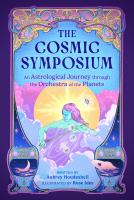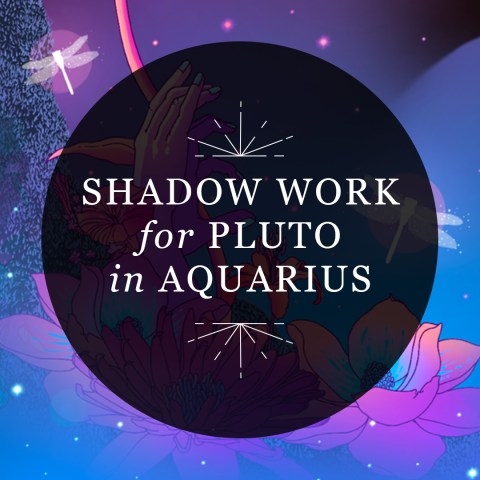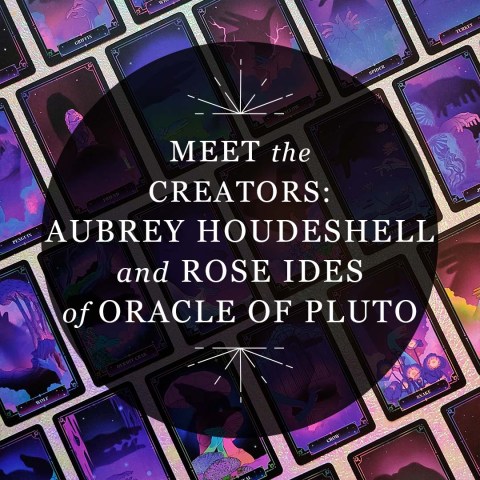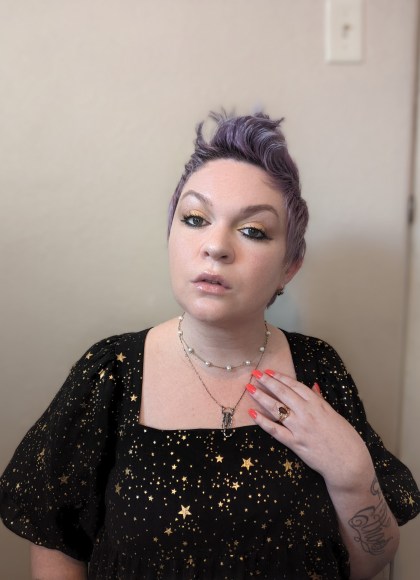Understanding the Pentacle of Venus: The Star Point Cycle in Your Natal Chart
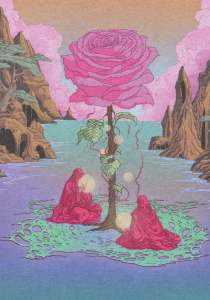
Dear Mystics, it’s time to go beyond Astrology 101! Aubrey Houdeshell – professional astrologer, shadow worker, and tarot reader – and artist Rose Ides invite you to explore your full natal chart as the celestial soundtrack of your life.
The Cosmic Symposium: An Astrological Journey through the Orchestra of the Planets details the themes, correspondences, and symbols of each of the Classical and Modern Planets (from the Sun to Pluto) plus Lilith, Chiron, Regulus, and the Lunar Nodes. This tome helps you connect to your planetary influences with magical workings and rituals, tarot and journaling exercises, and a recommended playlist for each planet.
Read on for an exclusive excerpt and playlist exploring the astrological magic of Venus’ unique path in our solar system and in your natal chart.
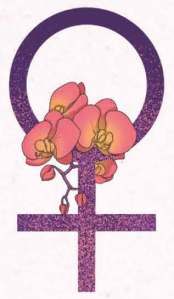
Venus: Among the Roses
“Music is indeed the mediator between the spiritual and the sensual life.”
– Ludwig van Beethoven
The goddess of love and beauty is immortalized in the heavens through the planet that shares her name. Closest in size to planet Earth but gaseous and poisonous on its surface, Venus has been an object of fascination for millennia. While it was observed in 1610 by Galileo with his telescope, it’s difficult to say when Venus was first “discovered.” The second planet from the Sun is the brightest object in the sky after the Sun and Moon, and therefore has been observed with the naked eye throughout time. Like Mercury, Venus operates within the bounds of the Earth’s orbit, and therefore possesses a Morning Star and Evening Star aspect. While it’s difficult to say why or how Venus was given its name, it’s interesting to note that before sky watchers commonly adopted the Roman goddess for this purpose, the ancient Babylonians referred to this heavenly body as the Star of Ishtar, after their own goddess of love, fertility, and war. It seems there has always been something about this planet that has felt uniquely feminine.
It’s no surprise, then, that in astrology Venus is the main partnership planet, representing love, beauty, the arts, and pleasure. Though her counterpart Mars also grapples with the themes of relationships, Venus represents the quintessential ideals of love and romance. Often thought of as the Feminine principle of partnership—which is to say the passive, receptive side—Venus represents the archetype of the Lover and Seductor. This planet represents the frequency at which our love reverberates across the cosmic stage, and even space-time itself, to connect and intertwine our soul with another whose timbre pairs well with our own.
The song of Venus is that of the heart: the melody contains all our longings, desires, and obsessions. The heart drips with golden honey; it is aflame with passion and soaked in yearning. When we are consumed by our desire, we are walking in her temple. When we are indulging in anything that brings us pleasure or ease, or when we are experiencing sensations that activate our physical senses, we are in her good graces. When we are surrounded by the beauty of nature—especially by the sea or in a garden of roses—we have entered her house. Venus is everywhere, in all things, always.
Indeed, love is the driving force behind all things, isn’t it? It unhinges even the heaviest doors, bursting every seam wide open and blanketing the world in a rosy haze that even the coldest of us cannot deny. Venus softens our edges and allows our hearts to unfold, blossoming as the flower kissed by the sunlight. Love is unlike anything else. It is both the musical tune that laces through our DNA and the subject of every song and piece of art in one way or another. We cannot deny love’s power over us, whether we are drunk on its promise, drowning in the sorrows of unrequited love, or riding high on the heels of a romantic night. Love is the root of all things. It is the portal to the Divine.
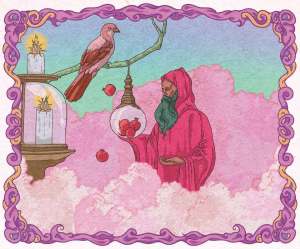
In a different way than Mercury, we can look to Venus when we speak of music. Where Mercury presides over the lyrical content of a song, Venus points to the artistic style or genre of music, as the planet that reigns over every artistic proclivity and notion. In this way we can look to our musical tastes as a direct clue into the song of our hearts and the melody our souls sing. Every beautiful thing that moves us, every piece of art we admire or create or marvel at, is thanks to Venus. The way in which we choose to dress or style our hair or adorn ourselves with accessories—or not—is directly linked to Venus. Regardless of gender, Venus graces us all with her gifts in one way or another. We are all lovers under this planet’s seductive charms, defenseless against her intoxicating promise. Everything, everything, everything is Venus.
In astrology, Venus is known as the Lesser Benefic—one of only two planets whose nature is thought to be innately good. Venus is also the only planet besides the Moon that is inherently Feminine. Venus is the cosmic embodiment of the goddess of love and beauty herself. The archetype of this goddess is easy enough for us to see through the astrological lens, as Venus represents the type of lover we are; this planet points to the way we show up in our romantic and sexual connections, which may diverge greatly from who we are in the rest of our relationships. This planet also represents our aesthetic preferences and the qualities we are attracted to and value in our partners and partnerships, as well as our finances, both in the literal or material sense, and our values around money. In her manifestation as the Evening Star, she is the brightest object in the sky after the Moon. In astrology, we determine whether or not someone has a day or night chart not by the position of the Moon or Sun, but by the position of Venus and its light. Those with a night chart are thought to have Venus on their team.
The ethereal goddess presides over the signs of Taurus and Libra and is said to be at home, or in domicile, there. The Mars-ruled signs of Scorpio and Aries are believed to put Venus ill at ease, as she struggles to embrace her natural softness in the sharp and hardened signs of Mars. Therefore, Venus is in detriment there. She finds her exaltation in Pisces, who embodies the ideals of unconditional love more than any other sign, and is in her fall in Virgo, who can struggle in relationships as they search for the nonexistent concept of perfection.

Venus is distinct from other planets because we look to much more than just the sign and house it presides in to unlock the nature of this ethereal rose. There is a very important cycle known as the Pentacle of Venus, which forms throughout her orbit thanks to its conjunctions with the Sun. This is also known as a Venus Cazimi or a Venus Star Point. Whenever Venus crosses over the heart of the Sun, it creates one of the points in the star pattern before shifting gears and moving in another direction.
The first is an inferior conjunction, which happens when Venus is between the Earth and the Sun. This conjunction occurs in the middle of a Venus Retrograde transit—a forty-day-long cycle that only occurs every eighteen months, significantly less often than that of Mercury. “[Venus] is then nearest to the Earth and, from our point of view, dark. Rising before the Sun, Venus appears in the predawn sky about a week after the inferior conjunction,” writes Michael R. Meyer in his article “Venus Morning Star—Venus Evening Star.” Venus will station direct approximately three weeks post-conjunction, and thirty-five to thirty-six days later peaks in brightness in the sky. “At this time, Venus is moving at the same speed as the Sun, and gaining,” says Meyer. The Venusian fivefold pattern begins at the inferior conjunction and kicks off a brand-new cycle in love for us all. It may be helpful to think of this as the New Moon phase of Venus. Each Venus Star Point sets in motion a collective theme surrounding love and romance, according to the sign it occurred in.
The second is a superior conjunction, which happens when Venus is on the far side of the Sun, and the Sun is standing between Venus and planet Earth. “Venus is furthest from the Earth…which is equivalent to the opposition aspect and Full Moon phase,” of Venus’s cycle, according to Meyer. This Star Point happens when Venus is moving at its fastest and is so close to the Sun that we can no longer see it with the naked eye. This conjunction initiates Venus into her Evening Star manifestation, and again, thirty-six days post-conjunction, she can be seen with the naked eye again, this time in the evening sky.

Thanks to this Star Point cycle, Venus spends half of her time as the Evening Star and half of her time as the Morning Star. Each is considered to bring a certain temperament to love. The first half of the cycle, Venus Morning Star, is characterized by a more emotionally impulsive, albeit eager and spontaneous, nature. Meyer explains it as corresponding with “our inner nature and the set of meaning-giving values guiding our daily actions and forming our long-term goals.”
In the second half of the Venusian cycle, we see Venus in her Evening Star aspect. This manifestation of the ethereal sphere corresponds with, “a deliberate and goal-oriented emotional make-up seeking to extract and distill the meaning of experiences encountered and ideals formulated during the Morning Star half-cycle. Whereas emotions and feelings eagerly rushed forward during the Venus [Morning Star] period, they are now more controlled and introverted in the Venus Evening Star period, though not necessarily less intense,” according to Meyer.
To determine whether or not you have a Venus Morning or Evening Star, look at the sign that Venus is in compared to that of your Sun. If Venus is in a sign that precedes your Sun sign—for example, say you have your natal Venus in Virgo, but your Sun sign is Libra—you have a Morning Star Venus. If Venus shows up in a sign after your Sun—for example, having a Libra Sun and a Scorpio Venus—you have an Evening Star Venus.
Those born under Venus Lucifer—a Morning Star Venus—are thought to lead with their emotions and are ready to express their feelings openly, with a kind of “feel first, think later” attitude. They are emotionally resilient and tend to bounce back from heartache or pain easier than their Venus Evening Star counterparts. These people are also believed to be open to new experiences, and in that sense are more extroverted and able to approach connections with others with a fresh attitude.
Those born under Venus Hesperus—an Evening Star Venus—don’t show their feelings as readily as their counterparts. They feel their emotions much more intensely and scar more easily and for longer than Morning Star types. These people take a much more introspective approach to love and emotions and tend to feel things more after the fact, leading to a much longer period of recovery. They may take years to move on from heartache or trauma.

During Venus’s retrograde period, we each undergo a transformation. Venus is often said to enter the underworld during this time, making her normal graces difficult to access. While in exile, Venus undergoes a certain death to prepare for the phase of renewal that the end of the retrograde signals. We, too, undergo a certain purging of the past to make room for a new set of values and ideals when it comes to love. This rebirth of the heart is something we experience as a collective during each of the retrograde periods, which we can see both in our individual lives and on the societal scale to a certain extent.
It is fairly uncommon to be born with Venus Retrograde in the chart—only about one in thirty people will have this natal placement—since Venus goes retrograde much less often than most other planets. Those who have the goddess of love moving through the underworld are believed to go against the grain in some way when it comes to love and sex. Whenever a planet is retrograde in the chart it can manifest in unexpected ways, and the energy of that planet is directed more internally.
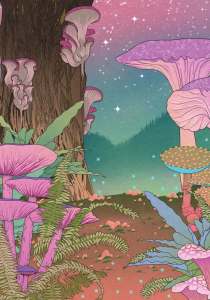
Venusian Soundtrack
HERB ALPERT AND THE TIJUANA BRASS—“LADYFINGERS”
ÉDITH PIAF—“LA VIE EN ROSE”
SLEEP TOKEN—“THE SUMMONING”





